Minimalism for Apartment Dwellers: Simplify Your Space & Life
Category: Lifestyle
Embrace Minimalism in Your Apartment: A Practical Guide
Living in an apartment presents unique challenges when adopting a minimalist lifestyle—limited space means every item must earn its place, and clutter quickly feels overwhelming. If you've landed here, you're likely seeking effective, practical strategies to simplify your living environment without sacrificing comfort or style. Perhaps you’ve tried decluttering before, only to find the mess creeping back in or felt the pinch of maximizing multifunctional solutions. Whether you're a beginner or have dabbled in minimalism, this guide offers targeted insights tailored to apartment dwellers striving for clarity and ease in their daily life.
You value intentional living and wish to break free from consumerism-driven chaos, aiming for a streamlined home that supports your mental well-being and productivity. This blog post goes beyond generic advice by focusing exclusively on the apartment context—exploring smart storage hacks, mindful buying, and lifestyle tweaks that respect your space limits. Here, we'll help you reclaim your apartment as a sanctuary where simplicity reigns, offering inspiration and concrete steps that fit your lifestyle. Read on to discover how minimalism can transform your apartment living experience into one of greater freedom, focus, and fulfillment.
- Embrace Minimalism in Your Apartment: A Practical Guide
- Understanding Minimalism: What It Means for Apartment Living
- Decluttering Strategies Tailored for Apartments
- Smart Storage Solutions to Maximize Limited Space
- Furniture Selection: Choosing Essentials That Serve Multiple Purposes
- Mindful Consumption: How to Avoid Building Clutter Again
- Creating a Calming, Minimalist Aesthetic in Your Apartment
- Daily Minimalist Habits to Maintain Your Simplified Apartment
- Balancing Minimalism and Personal Expression
Understanding Minimalism: What It Means for Apartment Living
Minimalism, especially in the context of apartment living, transcends merely owning fewer possessions; it centers on intentionality and quality over quantity. With limited square footage, every object you allow into your apartment should serve a clear purpose, whether functional, aesthetic, or emotional. This mindset encourages apartment dwellers to shift focus from accumulating items to curating a living space that enhances daily life and fosters calmness.
In small living spaces, minimalism promotes thoughtful decision-making by asking: Does this item add value or joy? Is it multifunctional? Rather than chasing trends or fitting in excess belongings, the minimalist apartment dweller prioritizes durable, meaningful possessions that maximize utility and maintain harmony within the home. This approach not only reduces physical clutter but also alleviates mental overwhelm, making minimalist apartment living a pathway to simplicity, sustainability, and intentional comfort.
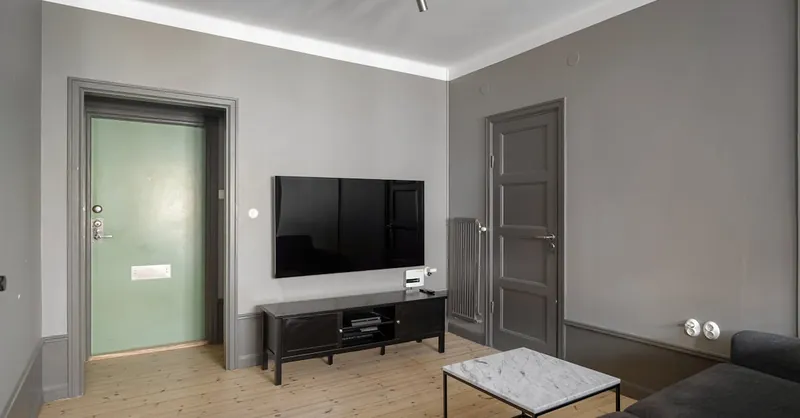
Image courtesy of Lisa Anna
Decluttering Strategies Tailored for Apartments
Decluttering in an apartment requires a strategic and mindful approach to overcome limited space and the emotional ties to belongings. Unlike larger homes, apartments demand extra attention to what stays, what goes, and how items are stored to maintain a clutter-free environment. Begin by categorizing your possessions into three clear groups: Keep, Donate, or Discard. This initial sorting helps create mental clarity and actionable next steps while maximizing your available space.
Step 1: Identify What to Keep
Focus on items that are essential, multifunctional, or bring you genuine joy. In a small apartment, every piece should justify its presence by either serving daily use or enhancing your living experience without overwhelming your space. Ask yourself:
- Do I regularly use this?
- Does it have more than one function?
- Does it contribute positively to my mental wellbeing or home aesthetics?
Step 2: Decide What to Donate
Items still in good condition but no longer needed deserve a new home. Donating saves space while supporting community causes and reducing waste. Scan your belongings for duplicates, things you rarely use, or items that no longer align with your minimalist goals.
Step 3: Determine What to Discard
Be realistic about what to discard—broken, outdated, or no longer functional items should be removed responsibly. Consider recycling options where available to minimize environmental impact.
Managing Emotional Attachment
Emotional connections often make decluttering challenging, especially in apartments, where possessions are part of your personal sanctuary. Combat this by:
- Taking photos of sentimental items before letting them go.
- Setting strict limits on keepsakes (e.g., a specific box or drawer).
- Reflecting on whether past memories can live independent of physical objects.
By following these tailored decluttering steps, apartment dwellers can create a spacious, calm living environment that aligns perfectly with minimalist principles while respecting the constraints of apartment life. The result is a home where every item has purpose and contributes to a balanced, simplified lifestyle.
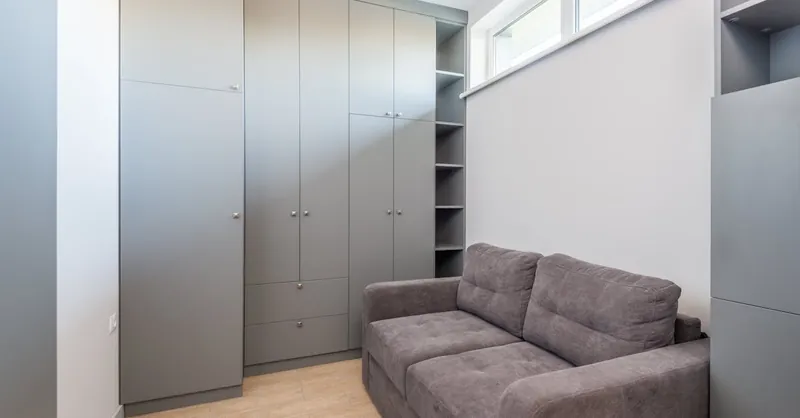
Image courtesy of Max Vakhtbovycn
Smart Storage Solutions to Maximize Limited Space
Maximizing storage in an apartment is a cornerstone of minimalist living. With limited square footage, adopting clever storage strategies not only reduces clutter but also enhances the overall functionality and aesthetic of your home. The key lies in using multi-functional furniture, capitalizing on vertical space, and choosing storage solutions designed specifically for small apartments.
Creative Storage Furniture
Investing in storage-forward furniture can dramatically improve your apartment’s organization without adding bulk. Look for pieces such as:
- Ottomans or benches with hidden compartments for stashing blankets, books, or everyday essentials.
- Beds with built-in drawers or lift-up frames to store clothing, shoes, or seasonal items beneath the mattress.
- Convertible desks or tables that fold away or expand, providing surface space when needed and saving room when not.
Vertical Space Utilization
When floor space is sparse, go vertical. Utilizing walls and tall storage units keeps belongings accessible but out of the way, fostering openness. Consider:
- Installing floating shelves above desks, beds, or doorways for books, plants, or decorative items.
- Using wall-mounted hooks or pegboards in kitchens, bathrooms, or entryways to keep everyday items organized and easy to grab.
- Adding stackable storage bins or modular shelving that make the most of your room’s height without crowding.
Multi-Functional Items
A minimalist apartment thrives on versatility. Choose items that serve multiple purposes to eliminate excess. For example:
- A fold-out sofa bed that provides seating by day and a place to sleep by night.
- A mirror with built-in shelves or jewelry storage to save counter space and streamline your morning routine.
- Storage baskets or cubes that double as side tables, blending utility with style.
By combining these smart storage techniques—storage-optimized furniture, vertical organization, and multi-use items—you transform your apartment into a streamlined sanctuary that feels both spacious and serene. These strategies empower apartment dwellers to fully embrace minimalism, maintaining order and intentionality in every square inch.
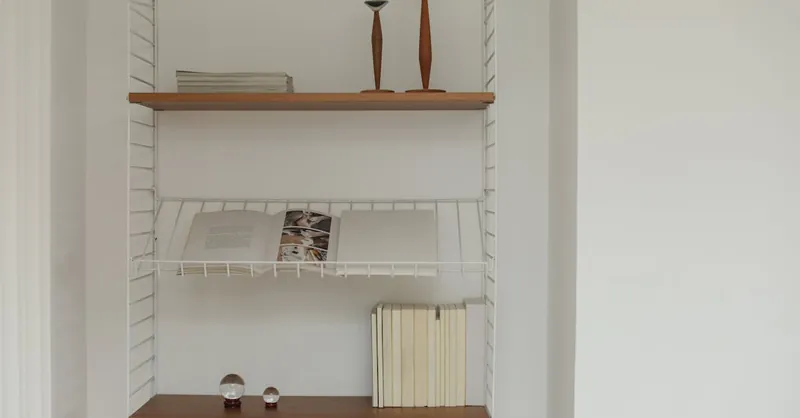
Image courtesy of Cup of Couple
Furniture Selection: Choosing Essentials That Serve Multiple Purposes
When embracing minimalism in an apartment, selecting furniture that optimizes comfort and space efficiency is crucial. Since apartments typically have limited square footage, every piece of furniture must justify its presence by offering more than one function or by seamlessly adapting to your lifestyle needs. Prioritize multi-functional furniture that maximizes usability without crowding your living space.
Key Tips for Choosing Minimalist Furniture
-
Opt for Convertible Pieces: Furniture like sofas that transform into beds, foldable desks, or extendable dining tables enable your space to serve several purposes—from work to relaxation to hosting guests—without requiring extra room.
-
Select Foldable or Stackable Designs: Items that can be folded away or stacked when not in use free up valuable floor space and reduce clutter. For example, a foldable desk can quickly create a home office area that disappears after work hours.
-
Prioritize Clean Lines and Neutral Colors: Minimalist furniture often features sleek designs and muted tones, which visually expand your apartment and create a cohesive, calming environment.
-
Look for Built-in Storage Features: Pieces like coffee tables with drawers or beds with underframe storage combine furniture and organization, reducing the need for additional bulky storage units.
By intentionally choosing furniture with multi-purpose functionality, compact design, and integrated storage, apartment dwellers enhance both comfort and efficiency. This approach not only supports a minimalist aesthetic but also promotes flexibility and flow—fundamental principles in simplifying apartment living.
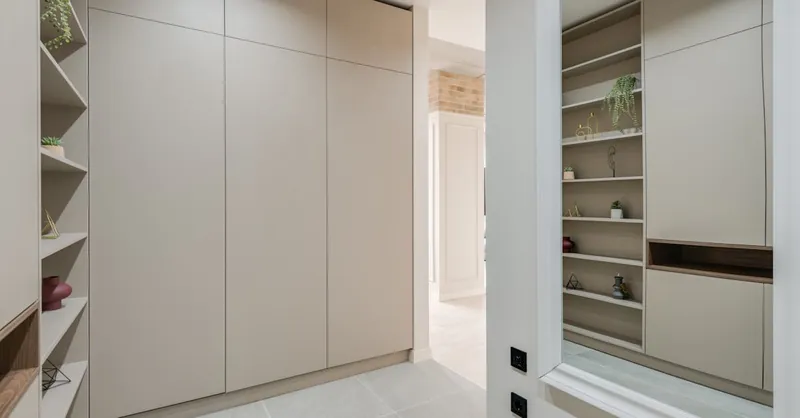
Image courtesy of Max Vakhtbovycn
Mindful Consumption: How to Avoid Building Clutter Again
Adopting minimalism in an apartment is not just about decluttering what you currently own—it’s equally important to cultivate habits that prevent clutter from accumulating in the future. Mindful consumption is a powerful mindset shift that helps you resist impulse buying and encourages sustainable, purposeful purchases tailored to your limited space and lifestyle. This approach transforms your shopping behaviors from reactive to intentional, aligning with minimalist values and protecting the calm, clutter-free sanctuary you've worked hard to create.
Cultivating Habits for Sustainable and Purposeful Purchasing
-
Pause Before You Buy
Make it a rule to wait at least 24 to 48 hours before purchasing non-essential items. This cooling-off period reduces impulse buys and allows you to reflect on whether the item truly adds value to your apartment life. -
Ask Intentional Questions
Before acquiring anything new, consider: - Do I need this, or do I just want it?
- Does this item serve multiple purposes or solve a specific problem?
- Where will I store it? Is there already something similar?
- Is it made sustainably and built to last?
These questions help you align purchases with your minimalist goals and apartment constraints.
-
Prioritize Quality Over Quantity
Investing in higher-quality, durable goods reduces replacement frequency and excess waste. For apartment dwellers, this means fewer but better possessions—items that last and enhance your living experience without overcrowding your space. -
Embrace Experiences Over Things
Shift your focus from material possessions to enriching experiences, such as dining out, hobbies, or travel. This mindset naturally limits clutter accumulation and promotes personal growth and fulfillment. -
Use a Replacement or “One In, One Out” Rule
To maintain balance, enforce a rule where acquiring a new item means donating or discarding an old one. This habit safeguards against gradual buildup and ensures each possession has a purpose.
By embedding mindful consumption habits into your everyday life, you not only protect your apartment from clutter’s return but also foster a sustainable, intentional lifestyle. This proactive approach to buying empowers apartment dwellers to embrace minimalism fully, enjoy their living space, and reduce environmental impact—turning minimalist principles into lifelong practices.
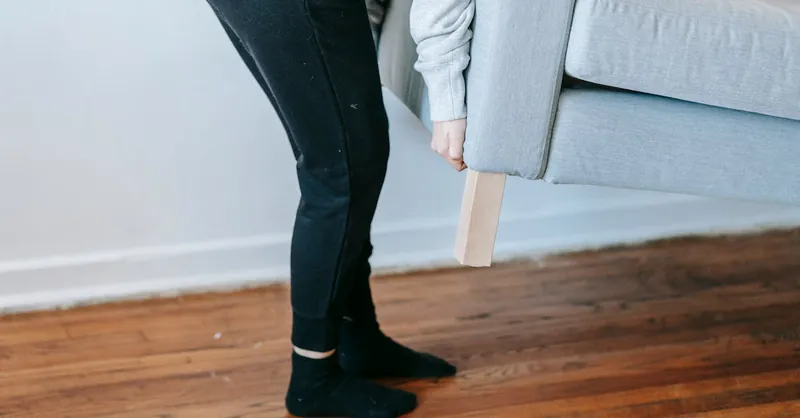
Image courtesy of Blue Bird
Creating a Calming, Minimalist Aesthetic in Your Apartment
Achieving a calming, minimalist aesthetic in your apartment is essential for fostering peace and simplicity without making the space feel cold or sterile. The key lies in selecting the right color palettes, decor choices, and layout strategies that enhance the sense of openness and tranquility while still expressing your personal style.
Thoughtful Color Palettes to Enhance Calmness
Choose neutral and muted tones as the foundation of your color palette—think soft whites, warm beiges, gentle grays, and earthy hues. These colors naturally expand small spaces visually and create a soothing backdrop that reduces visual noise. To prevent the space from feeling barren, incorporate subtle pops of color through accents like throw pillows, artwork, or plants. Soft pastels or natural shades like sage green or dusty blue work beautifully to maintain serenity while adding warmth.
Intentional Decor Choices for Simplicity and Style
Minimalist decor should emphasize quality over quantity. Select a few meaningful pieces that add texture and personality without cluttering the environment. Consider:
- Natural materials like wood, linen, or ceramics to introduce warmth and tactile interest.
- Greenery or small indoor plants, which purify air and create life within the space.
- Simple, streamlined artwork that complements rather than overwhelms the room.
- Functional accessories, such as elegant storage boxes or minimalist lighting, which enhance usability alongside aesthetic appeal.
Layout Tips to Foster Openness and Flow
A well-planned layout is vital to ensuring your apartment feels spacious and calm. Keep pathways clear and avoid overfilling rooms with furniture. Use these layout strategies:
1. Position furniture to maximize natural light and air circulation, which elevate mood and mental clarity.
2. Create dedicated zones for work, rest, and leisure to maintain organization and reduce distractions.
3. Employ symmetrical arrangements to evoke balance and harmony, essential components of a minimalist home.
4. Leave enough negative space around furniture and decor to allow the room to breathe visually.
By combining soothing color schemes, purposeful décor, and mindful layouts, you can cultivate an apartment environment that supports mental clarity, relaxation, and minimalist living. This aesthetic approach transforms your small space into a peaceful sanctuary that reflects simplicity while feeling inviting and far from sterile.
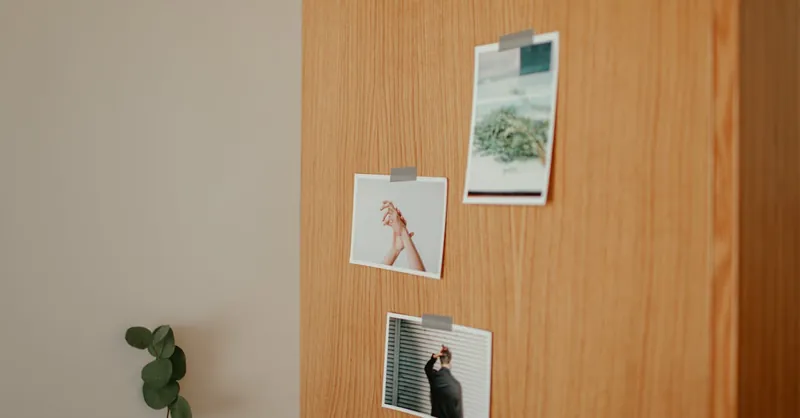
Image courtesy of Cup of Couple
Daily Minimalist Habits to Maintain Your Simplified Apartment
Adopting minimalism in your apartment is a continuous journey rather than a one-time project. Implementing daily minimalist habits ensures that your simplified space remains clutter-free, functional, and serene over the long term. Cultivating these practical routines and mindset practices transforms minimalism from a fleeting effort into a sustainable lifestyle that respects your apartment’s limited space and enhances mental clarity.
Establish Consistent Decluttering Rituals
Set aside a few minutes each day or week to quickly assess your space and remove any items that don’t belong or contribute to clutter. This simple habit prevents the gradual accumulation of unnecessary things and reinforces a mindset of intentionality. For example:
- Clear surfaces daily by putting away stray items immediately.
- Dedicate 10 minutes weekly to sort through mail, papers, or miscellaneous belongings.
- Regularly evaluate your wardrobe and donate or discard pieces you haven’t worn recently.
Practice Mindful Usage and Storage
Make a conscious effort to handle your possessions with care and always return items to their designated spots after use. This minimizes disorder and fosters respect for your belongings and living space. To implement this:
- Use baskets or trays for daily essentials like keys or glasses, preventing random placement.
- Label storage containers to streamline organization and retrieval.
- Avoid creating “temporary” piles; commit to dealing with items promptly.
Maintain a Minimal Mindset
Beyond physical habits, cultivating a minimalist mindset is crucial. Embrace intentionality in all aspects of your apartment living, including your interactions with belongings, routines, and even digital clutter. Key mindset practices include:
- Regularly reflecting on your values and how your possessions align with them.
- Being selective about bringing new items into your home, reinforcing the mindful consumption habits outlined earlier.
- Allowing space for calm and simplicity by saying no to unnecessary commitments or distracting clutter.
By integrating these daily minimalist habits—consistent decluttering, mindful usage and storage, and nurturing a minimalist mindset—you maintain the clarity and tranquility of your apartment. This ongoing commitment ensures minimalism remains a lasting, transformative lifestyle choice, perfectly suited to the unique challenges and opportunities of apartment living.
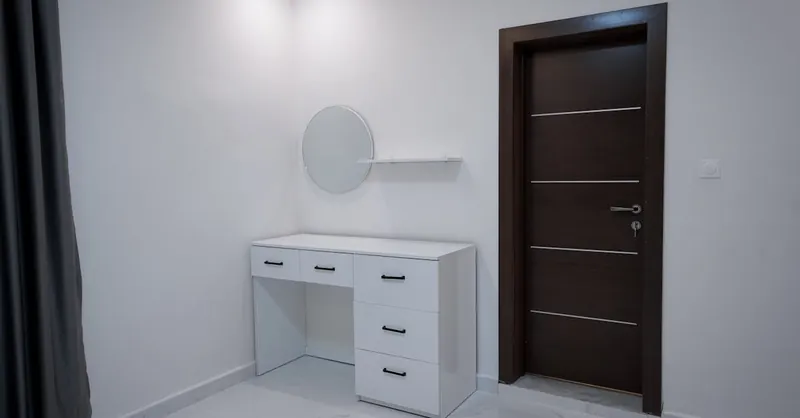
Image courtesy of zoom plus
Balancing Minimalism and Personal Expression
Adopting minimalism in a small apartment doesn't mean stripping your space of personality or meaningful belongings. Balancing minimalism and personal expression is key to creating a home that feels both simplified and distinctly yours. The goal is to incorporate meaningful items and personal touches thoughtfully, ensuring they add value without contributing to clutter or overwhelming limited space.
Strategies to Incorporate Personal Touches Mindfully
-
Curate a Small Collection of Meaningful Belongings
Instead of keeping every souvenir or gift, select a few cherished items that truly resonate with your values or memories. Display these intentionally in dedicated spots such as a single shelf, a shadow box, or a minimalist gallery wall. This approach honors your personal story without compromising your apartment's clean aesthetic. -
Integrate Functional Decor
Choose personal items that also serve a practical purpose. For example, handcrafted bowls, aesthetically pleasing organizers, or a favorite throw blanket can enhance style and comfort while fulfilling everyday needs. This dual-purpose philosophy aligns perfectly with minimalist living. -
Rotate Decorations Seasonally or Periodically
To prevent overcrowding, consider rotating personal decor items instead of displaying everything at once. Storing off-season or less frequently used pieces maintains freshness without clutter and allows you to appreciate each item fully. -
Express Yourself Through Color and Texture
Use subtle accents like textured fabrics, art prints, or small plants to reflect your personality softly. These elements enrich your minimalist apartment’s atmosphere while maintaining simplicity and openness. -
Limit Decorative Pieces
Establish a “less is more” mindset by setting a strict limit on non-essential decor. This ensures your apartment retains spaciousness and tranquility, two hallmark benefits of minimalism.
By thoughtfully curating personal items and integrating them strategically, apartment dwellers can enjoy a living space that feels authentic and uncluttered. This mindful blending of minimalism with personal expression supports a harmonious and inviting apartment sanctuary where every element has purpose and meaning.
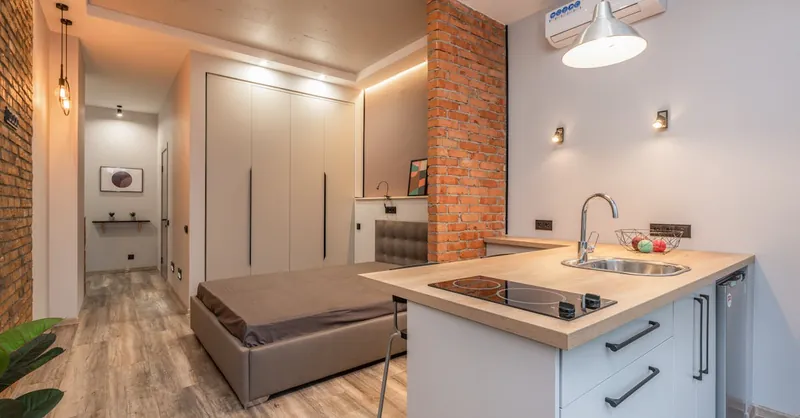
Image courtesy of Max Vakhtbovycn
